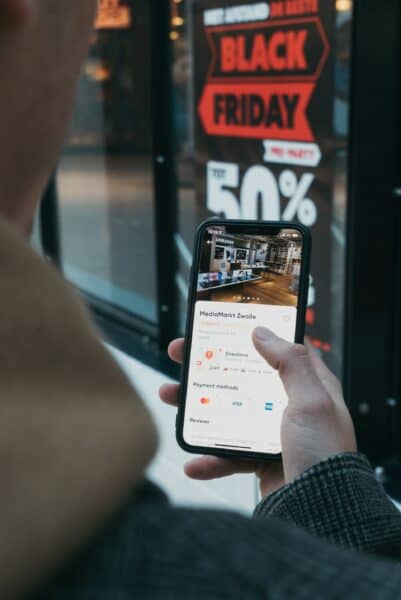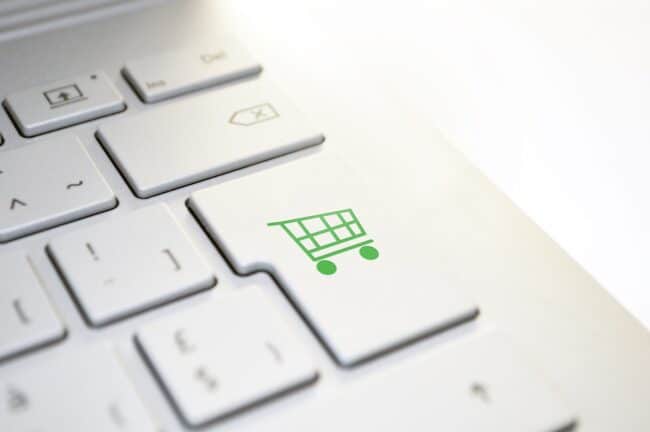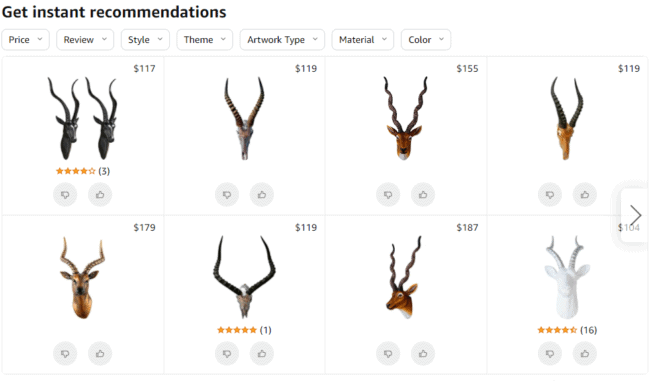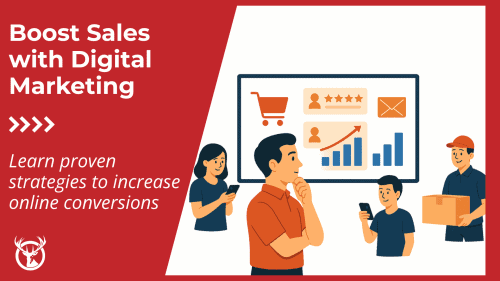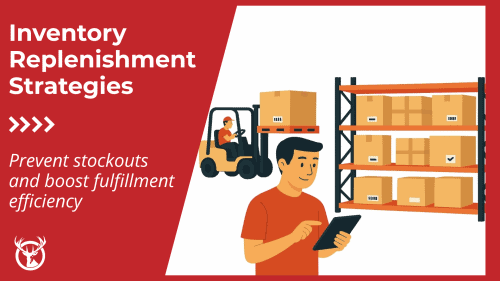If you want to maximize your eCommerce sales and profit, it’s time to implement cross merchandising displays and strategies. It’s a proven way to show customers more products and encourage more spending without getting in the way of the shopping they want to do. You stay helpful, and that increases the likelihood someone clicks “buy.”
Cross merchandising is common for grocery and traditional retail displays because their shoppers can browse and come across unexpected products. However, eCommerce companies like yours have some fantastic opportunities to reach your online shoppers by displaying products related to the pages they visit. Let’s dive into how suggesting these complementary products help maximize sales.
Defining cross merchandising
Cross merchandising is when you display a secondary product during the purchase steps of a primary product. You can display related goods or those from different product categories. It’s often used as close to the checkout process as possible, but eCommerce generally has flexibility in how you handle it.
Say you sell a product that requires batteries. When the customer tries to buy that from you, you can cross merchandise those batteries either as they’re added to the cart or as a reminder before inputting payment details, letting the customer know that batteries are required.
Cross merchandising can be especially useful when a customer may not realize you offer a necessary or related product, like batteries from an online toy store. And in eCommerce, inspiration to browse and buy can happen at any time.
How it helps customers
Cross merchandising is valuable to your company to move inventory. But when done right, it’s also helpful to your customers. Aim for ways you can help yourself and the customer and be purposeful about this approach.
A few ways to think about adding value for customers in cross merchandising strategies include:
- Saving them time. Grouping products usually bought together in one place helps people grab what they need quickly. For eCommerce, this can happen in the “Customers also bought” section or adding a one-click option for things like an extension cord on a page for an electric leaf blower.
- Adding a reminder. Many products either need other things to make them work or are used in situations where something else helps. Consider using a direct pop-up saying, “Don’t forget sunscreen,” when someone buys a beach towel. Or, if you’re back in the office, add some mints near the coffee machine.
- Addressing related tasks. Some products help us tackle individual elements of more significant issues. You may sell goods for multiple elements, so products are related but not used together. Cross merchandising can help someone turn to you to tackle this big issue. You have the world’s best grapefruit scent for mopping solution and curtain cleaners.
- Introducing new options. Have a new product or venturing into an entirely new category? Displaying these products during the browsing and checkout process can help people learn about your new goods.
What’s great is that many of these examples of cross merchandising work across products and categories. There are strong opportunities to boost sales for complementary products.
Cross merchandising specific to eCommerce
Today’s increased demands for eCommerce have taught these business owners to think about their companies differently. You’ve got a lot that separates you from brick-and-mortar commerce and we encourage you to bring that knowledge to your cross-merchandising approach.
One of your most important differentiators is your need to understand why a customer is visiting your store. Tailor cross merchandising to address that why. It’s important whether you solve an immediate problem, are better able to meet customer needs compared to local stores, offer a unique product, and so on.
A significant benefit for you is that people can browse you store at any time from any location. For example, whenever they’re reminded about a holiday like Father’s Day (about a month away at time of publication), the customer can immediately search for you or your products. If you’re a top destination for this holiday, adjust cross merchandising to target that specific why.
Thankfully, your customers love photos. This gives you the chance to use a carousel of images with simple text overlays to target multiple “whys” on any given page. A retail store couldn’t do that because it would make the targeted endcaps so long they just become another aisle.
5 ways to use it in eCommerce
When people think about cross merchandising, they’re usually focused on a physical store. Grocery stores as easy because of the sheer number of products and how quickly you can spot cross merchandising. Like when summer arrives and the chips, mustard, hamburger buns, and more leave their normal shelves to congregate on a seasonal aisle near the charcoal.
With that in mind, let’s think about how you can apply the concept to your eCommerce store and what it might look and feel like. Importantly, these are about how you display the opportunities.
1. Themes and product categories
Thanks to web design, eCommerce can create themes and groups better than almost any retail spot. That’s perfect for cross merchandising strategies, especially if you want to help customers that have a need but not a clear idea of what to buy. Some of the major opportunities here involve holiday traffic. Going back the Father’s Day note above, your business might not only be able to build a general “Dads” category but can create themes around different hobbies.
You’re cross merchandising as much with the categories you create as the products themselves, and customers who need that help will be highly receptive.
2. Below-product displays
Cross merchandising happens in most major marketplaces online, such as Amazon’s. You’ve likely seen it in the company’s “Compare with similar items” section where it suggests alternatives. Depending on your product categories, you might also see a recommendations section that allows for customization.
There’s a lot of flexibility for cross merchandising. Some examples of cross merchandising you can do include:
- Promote what other shoppers also bought
- Display related items to complete a look or activity
- Create and show a kit that includes this product and others
- Highlight what people who first landed on this page bought instead
- Go the other way and cross merchandise a contrasting alternative
Depending on your site design, these displays may also have options to be next to your product. That’s a perfect opportunity for anything that runs out of stock — a more common occurrence thanks to COVID, the Suez blockage, and more.
3. Pop-ups and overlays
There are many cross-merchandising strategies focused on impulse buys. In stores, that’s usually the candy at the register. For you, it’s a pop-up or overlay that makes a compelling case for something. Give the user a quick look at something else and mimic that quick look down an aisle. Keep it short and sweet.
Don’t forget that your newsletters are essentially products, too. Get people to “buy” those with the promise of a discount or other deal. If you’ve got a product that’s out of stock, the newsletter pop-up can be a great way to get a list of people who want to be notified when something is available again.
It’s also an opportunity to highlight positive product reviews.
4. In-cart messages
You can cross merchandise at any point, including when customers are looking at their cart. This is a smart opportunity to upsell customers based on your existing promotions.
If you offer free shipping at a certain threshold, for example, you can send an in-cart message letting someone know how much they need to add to reach that threshold. Advanced eCommerce software and plugins make it easy for cross merchandising products around that price, helping your customer.
The same is true for messaging around coupons like buy-one-get-one or when you offer a discount. Text such as “don’t forget your free gift” or “buy one more and save $5” can make cross merchandising much more compelling.
5. Reminders during checkout
Each cross-merchandising option happens at a different point in the shopper’s journey. Themes and below-product displays are great for when someone is actively browsing. As they add goods to a cart or start to navigate away, pop-ups can be especially effective. In-cart messaging allow you another cross merchandising or upsell option while also addressing pain points like shipping costs.
Your final opportunity during a sale is at checkout. This is where you place strategic reminders designed to help the customer more than help yourself. Use this as the final pitch for something like batteries if a product needs it, protective cases for phones, or warranties for fragile products and big purchases.
Everything here must be logical and useful to the shopper. Clutter too much and you risk a cart abandonment.
Think about the offers here that you would like or hate in other areas. If you were ordering takeout, an option to ask for utensils and napkins would be great. Having to scroll past or click an “X” on five extra entrees may feel like too much of a hassle.
Let fulfillment power your cross merchandising
Successful cross merchandising gets your customers to checkout with something extra. You need to give them a reason to add that additional product, and fulfillment can be one of your top merchandising strategies here. Customers are often willing to add something so they can reach free or faster shipping, which increases your sales and isn’t necessarily dependent on other shopping patterns.
If you want to go this proven route for maximizing sales, get yourself a 3PL like Red Stag Fulfillment. We make it easy for you to reach the majority of the U.S. within two days and keep it reasonably priced. That means you can afford to use these shipping methods for every order, and every successfully cross merchandised product just improves your margins.
Doesn’t your business deserve it?


